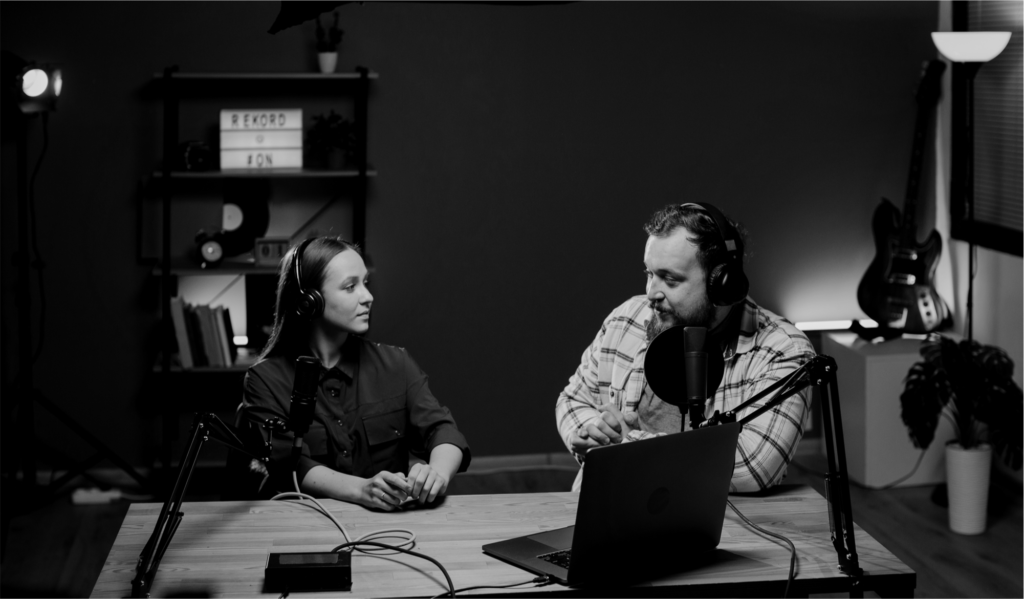


We encourage businesses to seek out podcasters on this site who may share the same target audience: whether it’s location, category, interests, or all of the above.
As well, we encourage podcasters to connect with businesses on this website to ask them if they’re interested in sponsoring or advertising with your podcast.
The following is merely a guideline on general rates of what podcasters may charge.
IMPORTANT: We do not take any responsibility or liability for any business or podcaster listed on this website. Partner with brands or podcasters at your own risk.
The rates for getting a podcaster to read your ad or sponsor your podcast can vary widely depending on the podcaster’s audience size, niche, engagement, and platform. Here’s a breakdown based on typical audience size:
CPM (Cost per Thousand Impressions): $20–$50 per 1,000 downloads
Ad Rates: $50–$500 per ad (for a single episode ad)
Details: Smaller podcasts usually have more niche audiences, and while the reach is limited, these podcasts can provide more engaged, targeted listeners. You might find deals that are more negotiable or flat-fee agreements with the podcast host.
CPM: $30–$75 per 1,000 downloads
Ad Rates: $300–$7,500 per ad (for a single episode ad)
Details: With a larger, but still niche audience, these podcasts tend to be able to command higher rates. The engagement is typically still strong, and a host-read ad is often perceived as more authentic.
CPM: $50–$100 per 1,000 downloads
Ad Rates: $5,000–$50,000 per ad (for a single episode ad)
Details: Larger podcasts are often able to charge premium rates due to the substantial audience size. Hosts may also offer package deals that include multiple episodes. At this scale, you might also see ads included in broader podcast networks.
CPM: $75–$150 per 1,000 downloads
Ad Rates: $10,000–$100,000+ per ad (for a single episode ad)
Details: Mega podcasts have massive audiences and can generate substantial revenue from advertisers. These rates can often include pre-roll, mid-roll, and post-roll ads, with the highest rates typically for mid-roll ads, as they engage listeners when they are already deep into the content.
Podcast Type: Host-read ads (where the podcaster reads the ad) are often more expensive than pre-recorded ads.
Ad Placement:
Pre-roll (beginning) ads tend to be cheaper than mid-roll (middle) or post-roll (end) ads. Mid-roll ads usually cost the most because they are more engaging.
If you sponsor a whole season or multiple episodes, you can negotiate discounts or better rates.
Engagement: Highly engaged listeners (e.g., listeners who regularly interact with the show’s community or follow the podcast closely) can add premium value to the ad rates.
Niche & Audience: Podcasts in highly desirable niches (e.g., tech, finance, health) may charge more even at smaller audience sizes, while podcasts with a broader audience may offer better rates for mass-market ads.
Other Payment Models:
Flat Fee: Some podcasters prefer to negotiate a flat fee for a given number of episodes.
Revenue Share: Some podcasters offer a revenue share arrangement where you pay them based on how many listeners act on your ad (i.e., click a link or make a purchase).
Sponsorship Packages: Package deals for multiple episodes, including mentions in newsletters or social media posts.
Overall, the pricing varies widely depending on the podcast, the industry, and how engaged the audience is.
Many advertisers consider working with podcasts that align with their brand’s values, even if the audience size is smaller, because a more targeted audience can result in better ROI.
Businesses can collaborate with podcasters and social media influencers in various creative and mutually beneficial ways.
Here are 10 ideas beyond just paying them for promotions:
Businesses can collaborate with podcasters or influencers to co-create content that showcases their expertise or products in an engaging way. For example, creating a podcast episode or a video series that highlights both the business and the influencer’s perspectives.
Give influencers exclusive access to new products, services, or events. This makes them feel valued, and their audience gets early access or insider information, which can drive interest and buzz around the business.
Set up affiliate programs where influencers get a commission for driving sales or leads through their content. This incentivizes them to promote the business in a way that directly benefits both parties.
Partner with influencers to host giveaways or contests that align with the business’s brand. This increases engagement and offers exposure to new potential customers, while giving influencers something exciting to offer their followers.
Work with influencers to gather feedback on products or services. They can provide insights from their audience, or even collaborate on designing a product that aligns with their followers’ needs. This strengthens brand loyalty and can help with refining offerings.
Instead of just a product placement, create custom, branded content that tells a story or provides value to the influencer’s audience. This could include educational content, tutorials, or behind-the-scenes looks at the business that are entertaining and informative.
Partner with influencers who do live streaming or other real-time events to sponsor these experiences. This could include supporting events such as webinars, live Q&As, or online workshops that the business can be associated with.
If an influencer has a side project, podcast, or creative endeavor, businesses can support them by sponsoring their work or collaborating on projects, providing resources, or even a platform for their content.
Utilize cross-promotion where both the business and the influencer promote each other on different platforms. For example, the influencer promotes the business on Instagram, while the business promotes the influencer’s podcast or YouTube channel in their newsletters or on their website.
Businesses can offer their products or services as perks to influencers in exchange for their promotion or feedback. Additionally, offering special discounts, personal services, or VIP experiences to influencers builds goodwill and creates opportunities for natural, authentic content.
